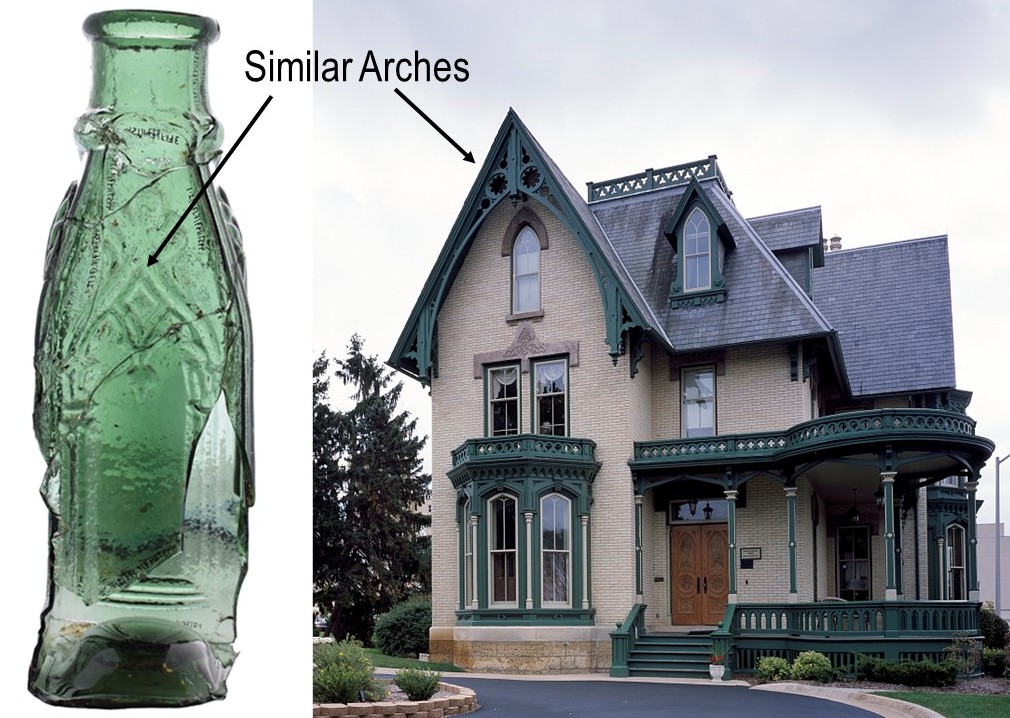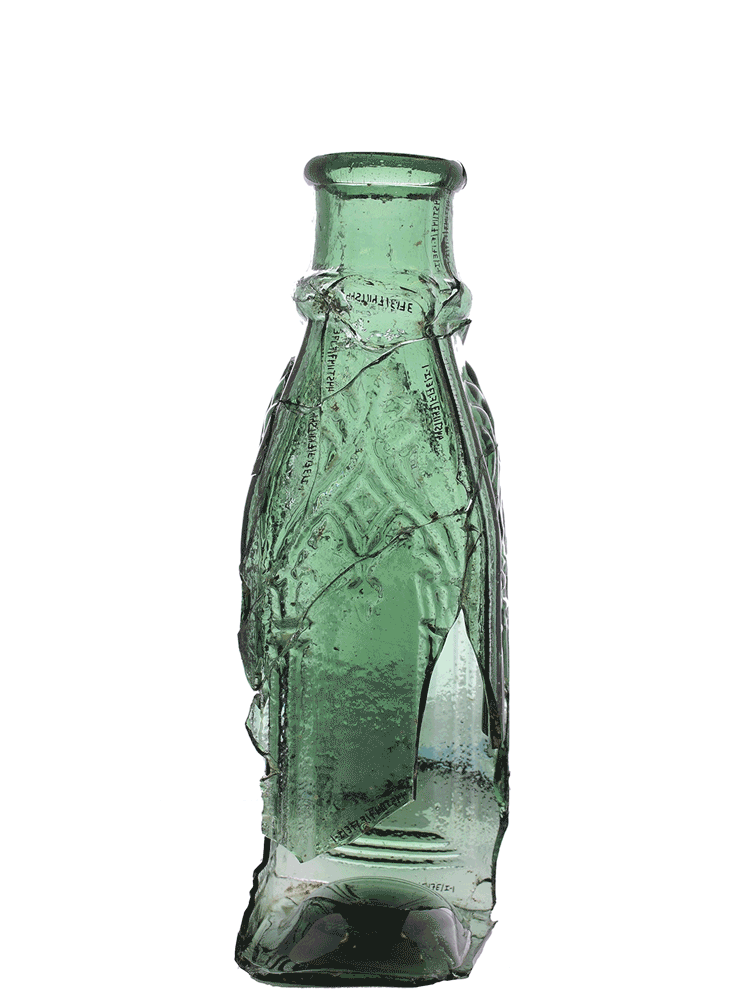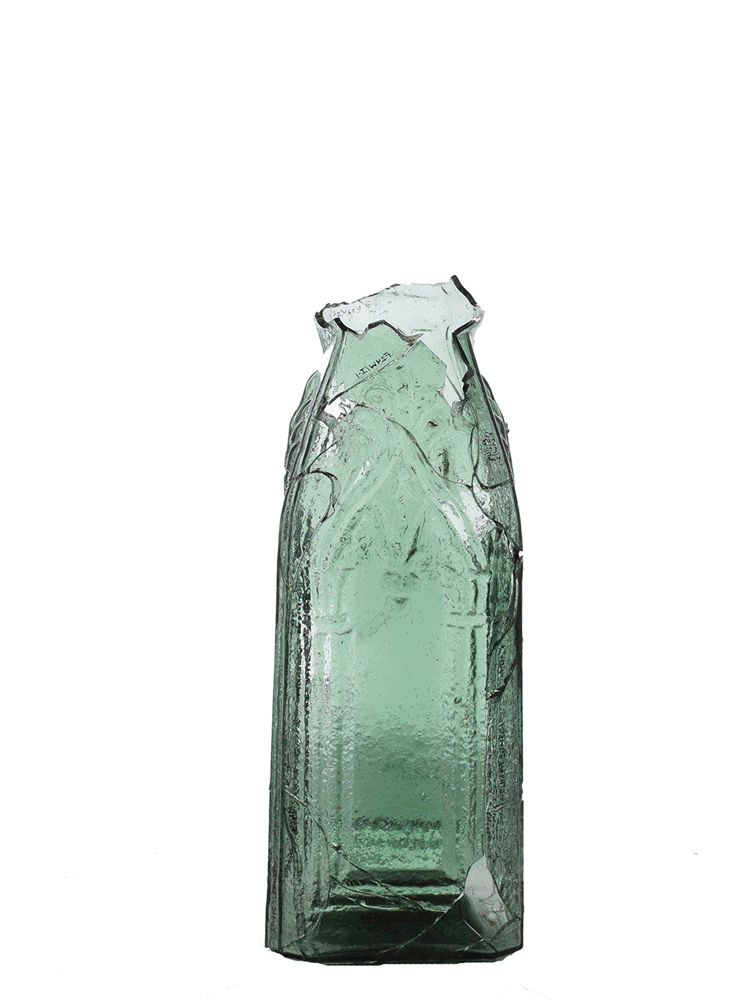Featured Fragment – Nineteenth-Century Pickle Bottles
By Kerry González
Recent excavations by Dovetail, conducted on behalf of Stafford County, recovered two cathedral-style pickle bottles (displayed below). They were located within two separate trash pits at a Civil War-era encampment in the town of Falmouth in Stafford County, occupied between 1862 and 1863. The area is now part of Pratt Park.
Bottles such as these were often used to hold foods that had been preserved through drying, smoking, pickling, etc. (Society for Historical Archaeology [SHA] 2016). This process, developed by M. Nicolas Appert, began during the Napoleonic War era as a means to help the military store foods for longer periods of time (SHA 2016). Appert’s process, formalized in 1809, began with direct heat which killed the bacteria in the food. This was followed up by the installation of an airtight seal over the mouth of the vessel to avoid additional contamination. Oddly, scientists of the time, Appert included, did not fully understand how or why the process of heating and sealing of a container preserved perishables for long periods of time; they just knew it worked (SHA 2016).
The ornate pint-sized bottles shown here exhibit a wide mouth, which allowed for bulky and large foods, such as pickles, to be packed and removed easily. The design of the bottle features beautiful elongated cathedral windows; it is a reflection of the Gothic Revival style en vogue during the mid-nineteenth century in America (SHA 2016). This revival not only affected the style of bottles of the time but architecture as well. Houses reflective of Gothic Revival style often feature steeply pitched roofs with a central cross gable lined with decorated vergeboards (ornate trimwork lining the roof eaves), a one-story entry or full-width porch, and windows with Gothic detailing, including drip molds, pointed arch (lancet), or false shaping (McAlester 2013 267–268). Clearly it was a popular motif and one that extended to even the most seemingly ordinary of objects—the humble pickle jar.
Any distributions of blog content, including text or images, should reference this blog in full citation. Data contained herein is the property of Dovetail Cultural Resource Group and its affiliates.
References:
Society for Historical Archaeology
2016 Society for Historical Archaeology Historic Glass Bottle Identification & Information Website. https://sha.org/bottle/index.htm, accessed September 2016.
McAlester,Virginia Salvage
2013 A Field Guide to American Houses. Alfred A.Knopf, New York, New York.



